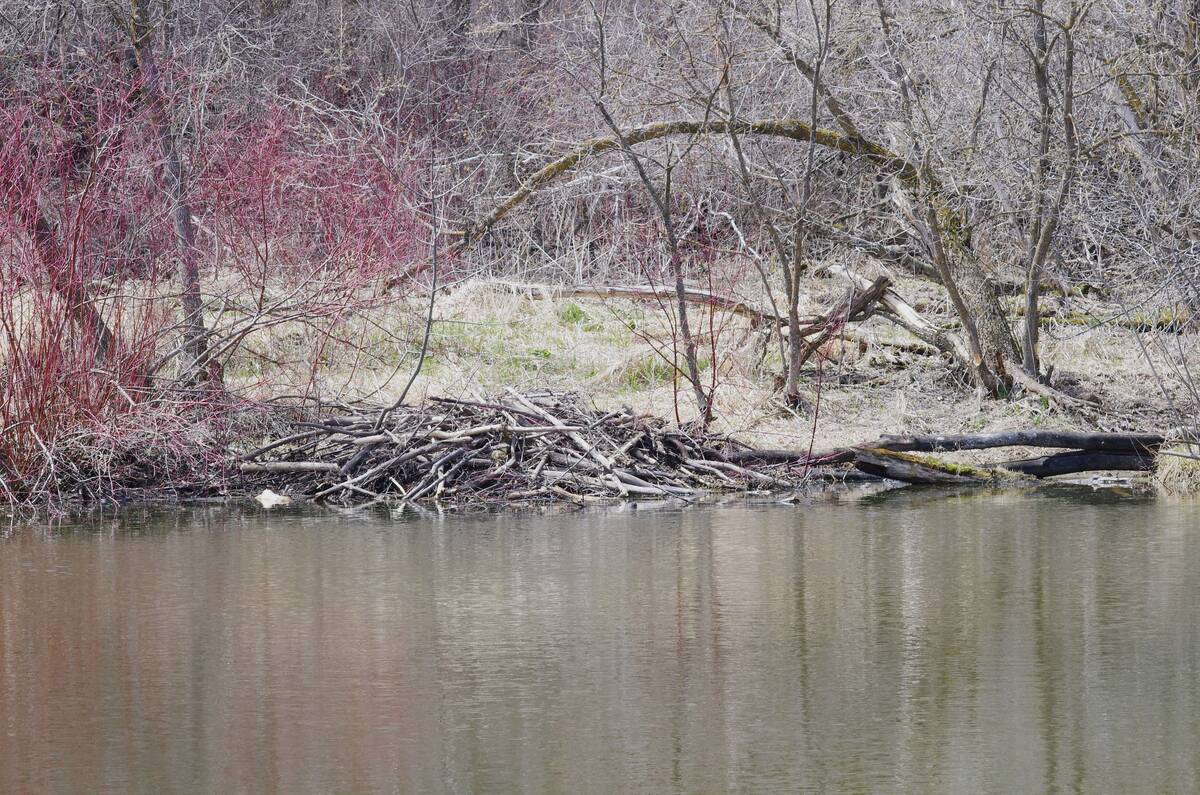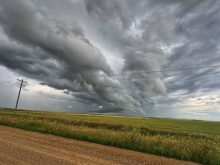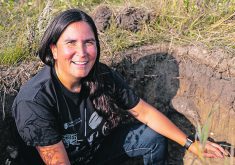The thing that makes beavers the bane of a farmer’s existence can also make them an ally in times of drought: they’re good at trapping water — really good.
In 2002, for example, as drought ravaged crops in Alberta, the few ponds still holding water were usually beaver ponds, ecologist Glynnis Hood says in her book, The Beaver Manifesto: Conservation, Conflict, and the Future of the Wetlands.
Back then, Hood recounts, some ranchers were requesting access to their neighbours’ property where there was an active beaver lodge. The ponds became naturally occuring water retention structures, providing water for livestock and some of the only green vegetation in sight as the rest of the Prairie area browned.
Read Also

Wetlands seen benefitting both agriculture, environment
Wetlands can play an important role as nature-based climate solutions, and they may also offer benefits to farmers and the agricultural sector in terms of crop yields and more, says a research scientist.
Hood, a professor emeritus with the University of Alberta, will release the second edition of The Beaver Manifesto this September.
Her book recounts the history of Indigenous and European interaction with the beaver and its role in the colonization of North America through the fur trade.
The Hudson’s Bay Company reported that between 1769 and 1868, more than 4.7 million beaver pelts were shipped to Britain, Hood wrote.
By the late 19th and early 20th centuries, provinces began to make efforts to protect the remaining population of beavers. In many areas, though, the species had vanished and would remain gone well into the 20th century.
“It’s difficult to comprehend the vast numbers of furs actually harvested,” the author writes.
“It is even more difficult to assess the ecological implications of the loss of millions of beavers across an entire continent.”
Wetlands, the habitat of the beaver, were also being drained to make way for agricultural land and settlements. Large swaths of the Prairies have lost more than 70 per cent of their wetlands, Hood said.

“I would love to have been able to set foot on the Prairies … and just seen it before things changed,” Hood said in an interview.
“I wonder if we would have even had the same level of catastrophic drought that we’ve had.”
It’s not just about water retention, she argues. Water bodies contribute to evaporation and, therefore, localized cloud formation — more ponds, more evaporation; more evaporation, more clouds.
Hood’s doctoral research, which centred around the beavers in Elk Island National Park in Alberta, fell within the extreme drought of the early 2000s.
Saskatchewan and Alberta were the hardest hit during the drought of 2001 and 2002, according to an Agriculture Canada report. During that time, agricultural production fell by an estimated $3.6 billion. Net farm income was negative or zero for several provinces.
As the drought progressed, beavers dug canals on the bottom of their ponds to collect any available water and direct it to where it was most needed, such as the doorways of their lodges and waterways to their foraging grounds, Hood wrote.
She and fellow researcher Suzanne Bayley used long-term resources such as aerial photos and park maps that showed beaver occupancy to gauge how the presence of beavers affected the extent of open water.
One of the most striking findings, she wrote, was a comparison of 1950 — the fourth-driest year on record at the time — with 2002. While 1950 actually saw 47 per cent more precipitation, there was 61 per cent less open water.
There were also no beavers noted in the study area in 1950. In 2002, though, they were well re-established.
“Beavers were actually mitigating the effects of drought,” Hood concluded.
That study hasn’t been replicated in other areas, Hood said in an interview, but University of Saskatchewan ecohydrologist Cherie Westbrook has studied groundwater and how it relates to beaver ponds. She found that where beaver ponds were present, they had an effect on the groundwater levels equivalent to a one-in-500-year flood. The effect on soil moisture extends for at least 150 metres from the pond.
Soil moisture equivalent to a one-in-500-year flood may not sound that appealing to farmers, some of whom are already tile draining or taking other measures to try to better control their moisture levels, productivity, nutrients and other loss issues that come with too much water.
Backing up water, such as beavers do, can be a destructive force on the farm.
For example, in 2017, Interlake rancher David Gall told CBC that an expanding population of beavers was sinking his pasture under dammed up water. Between 3,954 and 4,942 acres of pasture and hay meadows near Sleeve Lake had been flooded.
Hood said that she hears from a mix of those who want beavers removed from their land and those seeking the rodents to resettle.
“If I had been smart, I would have set up an internet dating service to link up those seeking rodents with those wishing to dispose of (them),” she said.
Beavers aren’t suitable for every landscape or farm, Hood acknowledged. However, she added, there are measures that can make coexistence easier.
Though technically retired, Hood continues to aid in the installation of “pond levelers,” which are pipes that extend through a beaver dam and act as an emergency drain if the water gets too high. A cage around the mouth of the pipe keeps the rodents from damming it up with mud and sticks.
Fencing can also be put up around trees to deter beavers from chewing on them.
Hood said she hopes The Beaver Manifesto will show farmers different ways of looking at and interacting with the landscape.
“I think there’s no one better than people working in agriculture.… Maybe it gives them one more thing to put into the picture as they’re out there on the land, looking at things,” she said.
















